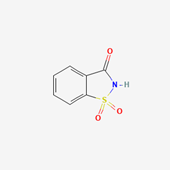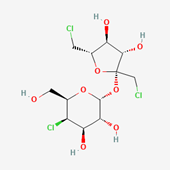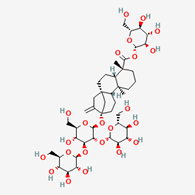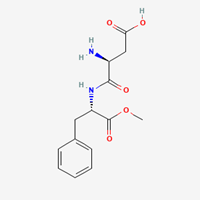Glucose tolerance is the body’s ability to process and metabolize glucose. In contrast, glucose intolerance is one’s inability to metabolize glucose and is associated with diabetes. The body’s glucose tolerance can vary throughout the day; however, it can be affected by internal and external factors. One such factor is the microbiome.
A microbiome can be described as the human body’s internal environment made up of a collection of various microbes. Bacteria, fungi and even viruses make up the collection of microscopic benefactors in our microbiome. The various microbes that live inside help us in our everyday lives by contributing to a number of processes such as digestion, energy production, and immune system development. Their roles can vary depending on where they are in the body: the skin, the mouth, the nose, the gut, etc.
When it comes to the balance of glucose homeostasis in the body, glucose tolerance, the microbiota within us can play a major role in its stability. Specifically in the microbiome located in the gut, the microbes help with the breakdown of products that are being processed in the small and large intestines. They also help regulate the intestinal lining which keeps harmful bacteria and pathogens for entering. When the presence of these protective microbes is decreased, the presence of harmful bacteria becomes more prevalent. Furthermore, these bacteria start inhibiting various functions of the intestines by triggering an immune response. The presence of these harmful bacteria is associated with diseases like glucose intolerance and diabetes.
Another factor pertains to what we eat. Artificial sweeteners, or non-nutritive sweeteners, that we consume in our daily lives can play a role in affecting our body’s glucose tolerance. Non-nutritive sweeteners, also known as NNS, are artificial sweeteners used to substitute the normally used sugars/sweeteners. These NNS compounds are developed to have a lesser caloric value than nutritive sweeteners while maintaining their sweetness. There are also concerns that the use of non-nutritive sweeteners is associated with an increased risk of obesity, however, there is limited, long term, data to support this. It has also been suggested that non-nutritive sweeteners can affect the body by increasing one’s appetite when an NNS is added to non-energy-yielding products [Mattes, Popkin: 2009].
A number of non-nutritive sweeteners have been approved by the FDA and have been used in various store products. Some examples are saccharin, sucralose, stevia, and aspartame.
Saccharin: (C7H5NO3S)

Saccharin is known as one the oldest non-nutritive sweeteners to be put to market. Also, it’s said to be seven hundred times sweeter than table sugar.
Sucralose: (C12H19Cl3O8)

Sucralose is commonly used in baking as a substitute for sugar, and it can be found in various store-bought food and drink products.
Stevia: (C44H70O23)

Stevia is a natural NNS which comes from the stevia plant. It’s used in various food products and as a tabletop sweetener.
Aspartame: (C14H18N2O5)

Aspartame can be found in a lot of different diet drinks and food stuffs. Also, it’s said to be two hundred times sweeter than regular sugar.
It has been suggested that NNS’s can lead to a lessened tolerance of glucose by causing a disruption in the homeostasis of the microbiome, specifically in the gut. This disruption, as previously mentioned, can lead to a number of conditions such as diabetes.
Utilizing data from an experiment described in “Personalized microbiome-driven effects of nonnutritive sweeteners on human glucose tolerance”, the exact effects of several NNSs on human’s glucose tolerance and microbiome diversity can be determined. The effects were viewed over a four-week period. Saccharin and sucralose created elevated iAUC (impaired glucose tolerance) in test groups during the 2 active weeks. While the iAUC was reduced in the follow up, it remained slightly above the baseline from week 1 of the experiment. On the other hand, Stevia and aspartame did not result in impaired glucose tolerance. In fact, these two NNS resulted in a lower iAUC at some point during the four weeks. Stevia during week 2 and aspartame during the follow up. Otherwise, both Stevia and aspartame maintained a stable iAUC (Suez 2022).
When it came to how these NNSs affected the microbiome in the gut and how that, in-turn, affected metabolic pathways, there were pathways that were either boosted or suppressed. For sucralose, Glycolysis I was the most increased pathway; however, it was still reduced compared to the control. The most decreased was the biosynthesis of isoprene. The production of its precursors is closely tied to glucose metabolic pathways, specifically glycolysis which is one of the main pathways in glucose metabolism (Li 2018).
As for saccharin, the most increased pathway was L-isoleucine biosynthesis IV while the most decreased was glycolysis VI (Suez 2022). L-isoleucine (and isoleucine) is mainly found in muscle tissues. It plays a role in protein metabolism and blood sugar regulation (PubChem 2004). Next for Aspartame, the most increased pathway was gluconeogenesis III, and the most decreased was L-arginine biosynthesis II (Suez 2022). Lastly, Stevia’s most increased pathway was Phospholipid biosynthesis I, and its most decreased was anhydromuropeptides recycling (Suez 2022).
One of the final stages of the experiment was to transplant the microbiomes of individuals from the six groups, via fecal samples, into germ-free mice to test if the altered microbiomes would also cause glucose intolerance. The fecal samples were taken from those who most strongly responded to the experiment and those who had the weakest response. First are the strongest responders.
In the mice that had been transplanted with the microbiome affected by saccharin, their glucose tolerance became impaired which was signified by the increased iAUC. The baseline and the Day 21 samples were distinctly separate in terms of iAUC. As for the subjects transplanted with the sucralose affected fecal matter, the day 21 sample possessed an elevated iAUC. While the sharp initial increase overlapped with the baseline, it took longer for the blood glucose level to return to normal. Thus, showing impaired glucose tolerance. When transplanted into the germ-free mice, the fecal matter of the strongest responder to Stevia caused impaired glucose tolerance. These mice had the greatest difference between their baseline and Day 21 samples. The iAUC of the two were distinctly different. Aspartame also caused an elevated iAUC in the transplanted mice; however, it had a pattern similar to sucralose: overlapping initial increase and delayed return to normal blood glucose levels (Suez 2022).
When it comes to the weakest responders. The saccharin affected microbiome still maintained a disparity between iAUCs of the baseline and the day 21 sample. While the initial spikes of both overlapped, the time it took to return to normal blood glucose levels of the Day 21 sample remained elevated. As for the NNSs: sucralose and Stevia, they possessed a similar pattern to one another. The baseline and the Day 21 of both NNSs overlapped during the initial spike and during the return to normal blood glucose levels. The aspartame microbiome showed a different pattern from the other three NNSs. There was a difference between the Day 21 and the baseline; however, the Day 21 sample possessed the lower iAUC of the two (Suez 2022).
During the four weeks of the human involved part of the experiment, the consumption of NNSs did, in fact, cause changes in glucose tolerance which was depicted by the differences in iAUC. However, only saccharin and sucralose caused elevations in iAUC. Aspartame and Stevia remained mostly constant but did possess periods of decreased iAUC (Suez 2022). It was also observed that the NNSs caused changes in the microbiomes of the participants. However, Stevia showed a pattern of change that was different from sucralose, saccharin, and aspartame. While the others suppressed most of their involved metabolic pathways, Stevia boosted them (Suez 2022). These changes remained present even after being transplanted into germ-free mice. The mice showed signs of impaired glucose tolerance after a fecal matter transplant from those who reacted to the experiment the most. When transplanted with fecal matter from those who reacted the least, the mice showed no elevation in iAUC aside from those transplanted with microbiomes affected by saccharin (Seuz 2022). While the overall processes of various metabolic pathways were discussed in class, the many ways they can break down or be impeded were not examined in great detail. Understanding what metabolic pathways are affected by NNSs can shed light on their processes and how their malfunction can affect the body as a whole. For example, saccharin suppressed part of the glycolytic pathway which could impede the production of ATP in the body. This would also lead to elevated blood sugar levels due to an excess of glucose that isn’t being reacted properly.
References:
Additional information about high-intensity sweeteners (2018) U.S. Food and Drug Administration. FDA. Available at: https://www.fda.gov/food/food-additives-petitions/additional-information-about-high-intensity-sweeteners-permitted-use-food-united-states (Accessed: October 21, 2022).
Ahrén, B. (2013) Glucose: Glucose tolerance, Encyclopedia of Human Nutrition (Third Edition). Academic Press. Available at: https://www.sciencedirect.com/science/article/pii/B9780123750839001343 (Accessed: October 21, 2022).
Aspartame (2021) National Center for Biotechnology Information. PubChem Compound Database. U.S. National Library of Medicine. Available at: https://pubchem.ncbi.nlm.nih.gov/compound/134601#section=2D-Structure (Accessed: October 21, 2022).
Chan, H.T.H. (2022) The microbiome, The Nutrition Source. Available at: https://www.hsph.harvard.edu/nutritionsource/microbiome/#:~:text=The%20microbiome%20is%20a%20living%20dynamic%20environment%20where,exercise%2C%20and%20a%20host%20of%20other%20environmental%20exposures. (Accessed: October 21, 2022).
Chatzivasileiou, A.O. et al. (2018) Two-step pathway for isoprenoid synthesis | PNAS, PNAS. Available at: https://www.pnas.org/doi/10.1073/pnas.1812935116 (Accessed: December 9, 2022).
Glucose tolerance (2022) Merriam-Webster. Merriam-Webster. Available at: https://www.merriam-webster.com/medical/glucose%20tolerance (Accessed: October 21, 2022).
Howard, E.J., Lam, T.K.T. and Duca, F.A. (2021) The gut microbiome: Connecting diet, glucose homeostasis, and disease, Annual review of medicine. U.S. National Library of Medicine. Available at: https://pubmed.ncbi.nlm.nih.gov/34678047/ (Accessed: October 21, 2022).
Li, M. et al. (2018) Metabolic engineering for the production of isoprene and isopentenol by Escherichia coli, ResearchGate. Available at: https://www.researchgate.net/publication/326396460_Metabolic_engineering_for_the_production_of_isoprene_and_isopentenol_by_Escherichia_coli (Accessed: December 9, 2022).
Liauchonak, I. et al. (2019) Non-nutritive sweeteners and their implications on the development of metabolic syndrome, Nutrients. MDPI. Available at: https://www.ncbi.nlm.nih.gov/pmc/articles/PMC6471792/ (Accessed: October 21, 2022).
Marks, J.G. and Miller, J.J. (2019) Glucose tolerance, Glucose Tolerance – an overview | ScienceDirect Topics. Available at: https://www.sciencedirect.com/topics/medicine-and-dentistry/glucose-tolerance (Accessed: October 21, 2022).
Mattes, R.D. and Popkin, B.M. (2009) Nonnutritive sweetener consumption in humans: Effects on appetite and food intake and their putative mechanisms, The American journal of clinical nutrition. U.S. National Library of Medicine. Available at: https://pubmed.ncbi.nlm.nih.gov/19056571/#:~:text=Nonnutritive%20sweeteners%20%28NNS%29%20are%20ecologically%20novel%20chemosensory%20signaling,y%20ingest%20NNS%2C%20but%20the%20incidence%20is%20increasing. (Accessed: October 21, 2022).
Microbiome (2022) National Institute of Environmental Health Sciences. U.S. Department of Health and Human Services. Available at: https://www.niehs.nih.gov/health/topics/science/microbiome/index.cfm (Accessed: October 21, 2022).
N/A, N.A. (2004) L-Isoleucine, National Center for Biotechnology Information. PubChem Compound Database. U.S. National Library of Medicine. Available at: https://pubchem.ncbi.nlm.nih.gov/compound/l-isoleucine (Accessed: December 9, 2022).
Non-nutritive sweeteners (artificial sweeteners) (2022) www.heart.org. Available at: https://www.heart.org/en/healthy-living/healthy-eating/eat-smart/sugar/nonnutritive-sweeteners-artificial-sweeteners (Accessed: October 21, 2022).
Rebaudioside a (2021) National Center for Biotechnology Information. PubChem Compound Database. U.S. National Library of Medicine. Available at: https://pubchem.ncbi.nlm.nih.gov/compound/6918840 (Accessed: October 21, 2022).
Saccharin (2021) National Center for Biotechnology Information. PubChem Compound Database. U.S. National Library of Medicine. Available at: https://pubchem.ncbi.nlm.nih.gov/compound/5143 (Accessed: October 21, 2022).
Sucralose (2021) National Center for Biotechnology Information. PubChem Compound Database. U.S. National Library of Medicine. Available at: https://pubchem.ncbi.nlm.nih.gov/compound/71485 (Accessed: October 21, 2022).
Suez, J. et al. (2022) “Personalized microbiome-driven effects of non-nutritive sweeteners on human glucose tolerance,” Cell, 185(18). Available at: https://doi.org/10.1016/j.cell.2022.07.016.

Leave a Reply